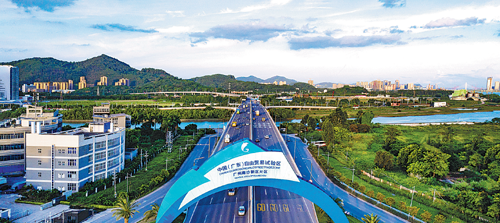Nansha district positions itself to be a hub of technological greatness
Having laid a solid industrial foundation, Nansha district in Guangzhou, South China's Guangdong province, is focusing on high-quality development to become a regional leader in modern manufacturing and strategic emerging sectors.
According to the district's latest five-year plan for emerging industry development, its industrial added value of strategic emerging sectors is projected to rise 14 percent annually on average. By the end of 2025, it is forecast to reach 121 billion yuan ($17.9 billion), accounting for 40 percent of the district's GDP.
Of the sectors, the annual industrial output value of intelligent connected automobiles will be close to 300 billion yuan and be one of the domestic leading players. New-generation information technology, artificial intelligence and healthcare sectors will grow to about 100 billion yuan each.
Three other important strategic emerging industries include new energy, high-end equipment and emerging services. The former two will generate an annual industrial output value of nearly 50 billion yuan each in 2025 in line with the plan, while the latter is expected to surpass 20 billion yuan.
A view of the Nansha area of the China (Guangdong) Pilot Free Trade Zone. CHINA DAILY
The district government has also made plans for cutting-edge technologies, such as blockchain, quantum science and technology as well as nanotechnology.
According to the plan, the district will make breakthroughs in technologies and applications in fields of natural gas hydrate, humanoid intelligence, quantum information, nanotechnology and new materials.
The district witnessed strong economic growth over 2016-20, with several major indices posting double-digit growth, official statistics showed.
Its industrial output value hit roughly 350 billion yuan in 2021, up 11.1 percent year-on-year, according to government data.
Of all the industries, carmakers generated more than 150 billion yuan in output. The new energy vehicle industrial cluster, led by GAC Toyota, a joint venture between Guangzhou Automobile Group and Toyota; and two Chinese companies Hycan and WM Motor, is growing rapidly.



 Print
Print Mail
Mail


